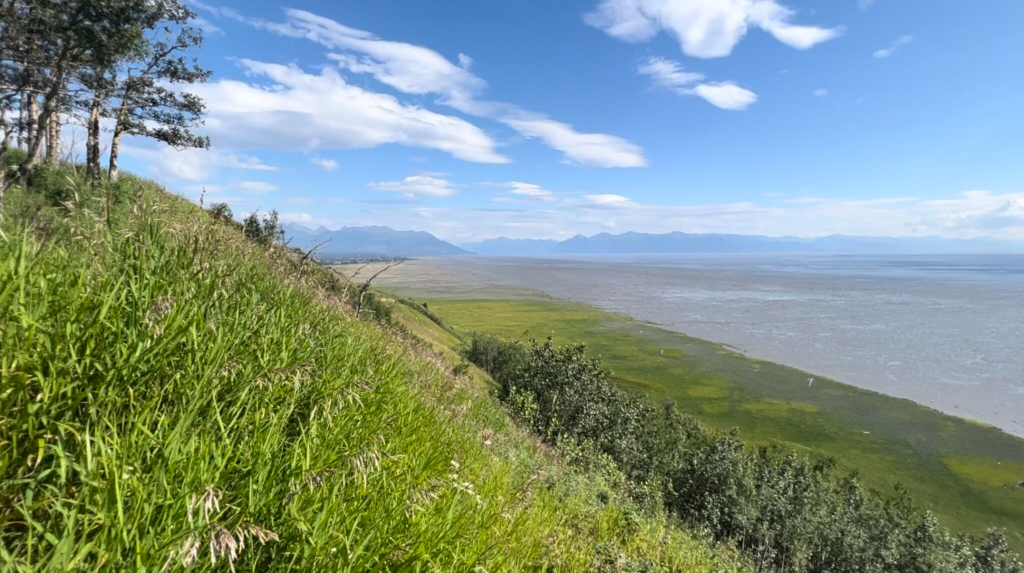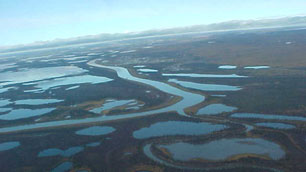Northern Alaska follows global trend with warmest July on record

The global average temperature has hit record high marks recently, with some estimates that Earth is warmer now than it has been in hundreds of thousands of years.
It’s been hot in Alaska, too, even after a cool start to the summer for much of the state.
National Weather Service climate researcher Brian Brettschneider, back for our Ask a Climatologist segment, says about a quarter of Alaska had its warmest July on record.
And while the state has been spared from even worse heat, like the 90-plus degrees seen in parts of South America, where it’s supposed to be the middle of winter right now, Brettschneider says Alaska could easily end up back in what he calls “the bullseye.”
The following transcript has been lightly edited for clarity.
Brian Brettschneider: Well, we’ve seen that in the past. So 2016, at the time, was the warmest year on record. And Alaska really was in the bullseye of that. We really kind of shattered our record for the warmest year. But even that year, about 10 or 15% of the Earth experienced their single warmest year on record. So when we say, “Globally, it’s the warmest month or the warmest year,” that’s a global average. It can vary a lot from place to place. So July 2023, globally, shattered by a very wide margin the warmest July on record and the warmest any month on record.
Casey Grove: I think I read somewhere that the estimate is that it was the warmest in 120,000 years or something like that. Is that right?
BB: Well, that’s a little bit speculative. We do have good ice core and proxy temperature records going back even several hundreds of thousands of years. And there’s a pretty reasonable chance that this year is the warmest it’s been at any point in the last several hundred thousand years. Certainly the last several thousand years, and again, potentially tens or even hundreds of thousands of years.
CG: Wow. Yeah. It’s just like these timescales that boggle the mind. I mean, it’s just too big for a human to comprehend. But I guess one thing we can wrap our heads around is it did seem like we had a pretty cool start to the summer here in Alaska, most of Alaska, and then it changed as things do, right? Can you can you tell me about that, and kind of where we are at here at this point in the summer?
BB: Me being in Anchorage, I’ve heard a lot about how cool it’s been this summer. And in Anchorage proper, in the city itself, it has been the coolest start to the summer in 11 years. So not historically cool, but cool compared to the last decade or so. Now July, statewide, looks like it finished as the sixth warmest July on record statewide. So this notion that Alaska has had a cool summer is really very far from reality. Statewide, a very warm July. So places kind of from Fairbanks eastward and Fairbanks northward, many set records. Fairbanks had their second warmest July. Northway had their warmest July, by a wide margin. Eagle, I think, had their warmest or second warmest July. Up on the North Slope, Utqiaġvik had their warmest month on record. The other day, they had an average daily temperature of 66, their warmest day on record. And I think six of the 20 warmest days on record in Utqiaġvik have happened in the last month. In fact, in the last 30 days, it’s the first time they’ve ever had a 30-day average temperature above 50 degrees. Really exceptional, in some cases, unprecedented warmth in northern Alaska.
CG: So yeah, I mean, we’ve been talking about anticipating an El Niño pattern setting in. Are these high temperatures that we’re seeing, are those a results of an El Niño or, you know, any other phenomenon?
BB: So there’s currently a moderately strong El Niño in the central Pacific Ocean, and that is liberating some warmth to the atmosphere that had been kind of sequestered down below in the previous couple of La Niña years. But really, what we’re seeing is that it’s really kind of everywhere. We are seeing, especially the north Atlantic Ocean, much warmer than normal sea surface temperatures, really from the equator or even south of the equator, all the way to the British Isles, you know, 50 degrees north. And so that’s completely disconnected from the Pacific Ocean. So El Niño is liberating some warmth, and that’s definitely a contributing factor, potentially even a significantly contributing factor to the record temperatures we had this month, but it’s not the complete story, and likely is only a modest part of the story.
Related stories from around the North:
Canada: Hot and dry July saw temperature records topple in the Yukon, CBC News
Greenland: Alarming, above-average ice loss in Greenland due to rising temperatures, Eye on the Arctic
Norway: Polar heat record. July average above 10°C, The Independent Barents Observer
Sweden: High risk of wildfires in many parts of Sweden, including North, Radio Sweden



